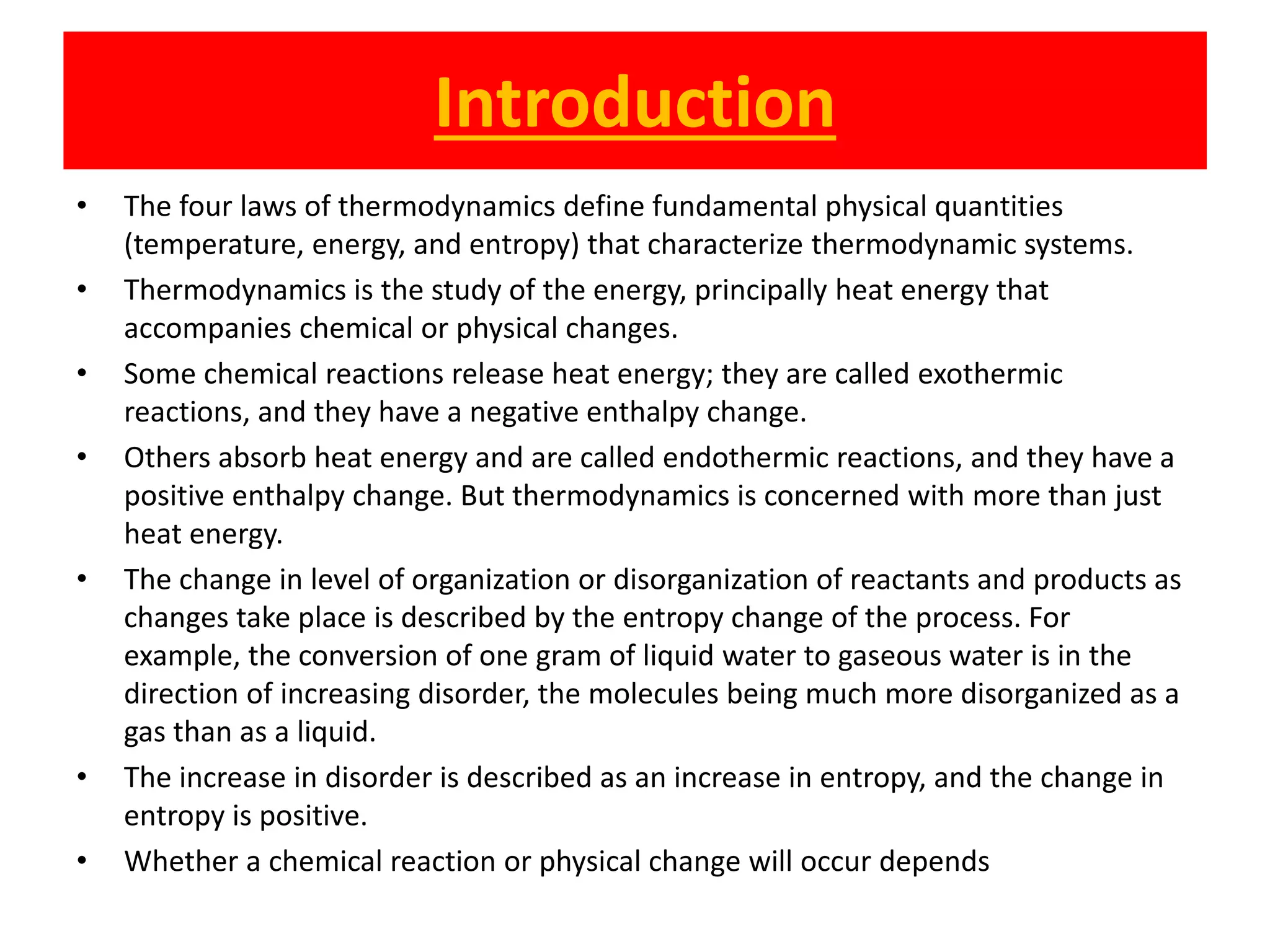The document discusses the fundamental laws of thermodynamics, including the first, second, and third laws, that govern energy transfer and its implications in physical and chemical processes. It highlights the concepts of heat, energy, entropy, and their changes, explaining their significance and historical development. The conclusion draws on the implications of thermodynamics on the universe's beginning and the ongoing decrease of usable energy.











